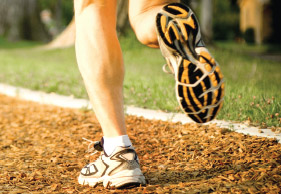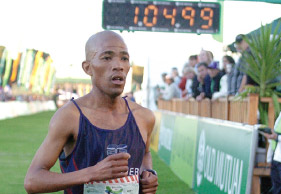Running is good for you – study after study has proven that – but it also places strain on your body. Each time you take a stride and land, your body has to absorb two to three times its own weight. Which is why we wear running shoes that are designed to handle the shock of thousands and thousands of foot strikes, with midsoles made from cushioning and shockabsorbing rubber
compounds that can handle this impact.
It is therefore important that you look after your running shoes well, both to prolong their running life and to ensure your running is smooth, comfortable and injuryfree. Fortunately, looking after them is easy, and there are only a few rules you need to abide by to ensure that your shoes last the distance.
1. NO MACHINES!
Many of us like to wash our running shoes regularly, because they get dirty, sweaty and smelly from running. The cardinal rule here is never to put your shoes through the washing machine or tumble dryer. This is because the heat from and detergents used in a washing machine cycle and tumble dryer break down the glues that hold your shoes together. The best method of washing shoes is to do it by hand in lukewarm water. Yes, it is hard work and timeconsuming, but essential if you want your shoes to last.
2. DRY THEM SLOWLY
The best way to dry your shoes, either after running in the wet or after washing them, is to stuff them with newspaper and leave them to dry naturally, preferably out of the sun and in a wellventilated room.
Don’t leave your shoes to dry in front of a heater or in the oven’s warming drawer, as they will dry too quickly and the intense heat could damage the midsole and adhesive glues holding the shoes together. Even worse, many a runner has forgotten their shoes resting against a heater or in an oven and come back later to fi nd their lovely running shoes melted, deformed and useless. Running shoes are expensive and it’s sometimes difficult to find the perfect pair for your feet and running style, so you don’t want to have to throw away your favourite pair because you overcooked them!
3. NO SMELL
Regular handwashing and drying of your shoes, and using clean socks, should all help prevent odour problems. You can also use an antibacterial spray between washes. This will help to kill the bacteria and fungus that cause shoes to smell.
4. ONLY RUN IN THEM
A big nono is using your running shoes for other sports or activities. Just as you wouldn’t use ballet shoes for rock climbing, you should only use your running shoes for running – this is what they have been designed for. The quickest way to wreck and stretch your running shoes is to hit the tennis court or play soccer in them. They are not designed for the kind of lateral movement that these sports require, nor the wear and tear of kicking.
5. TRAINING VERSUS RACING
Some runners have racing shoes for races and training shoes for training runs. While some have racing flats for racing and conventional models for training, in many cases the shoes are identical, but the specific pairs are used for specific activities. This is really only necessary if you are a serious runner
participating in two to three races a month.
It is a good idea to have at least two pairs of running shoes to help prolong their life and to make sure they don’t wear out too quickly. That way you can train in one pair and race in the other. Do some training in your race shoes, though, to get a feel for them and to ensure they are worn in before race day.
If you are looking for a secondary race shoe, it is worth making the decision based on the distance you plan to run. Generally, a lightweight racing shoe is fi ne up to 10km, but unless you are a superefficient and light athlete, you will need something more cushioned for longer distances.
6. ROADS VERSUS TRAILS
Another big nono is running offroad with your road shoes. Put it like this: take a pair of ultralightweight
roadracing shoes on a few trailrunning events and you’ll probably see them disintegrate before your eyes. Even more robust road shoes will eventually show signs of wear and tear if you use them on the trails.
Rough surfaces will damage road shoes, which are built for flat, smooth surfaces, so get a pair of trail shoes designed for the rough terrain. Even if you are running on light trails, it is worth investing in a pair of trail shoes.
7. REPLACEMENT DATE
A pair of running shoes can start to feel like an old friend after you’ve done many kays in them, so it can be hard deciding to replace them. Keep in mind, though, that no matter how comfortable and reliable they are, sooner or later they will let you down, because the rubber midsole material of running shoes has a limited lifespan.
To keep track of the mileage your shoes do, keep a shoe log and fi ll it in after every run, or include your shoes in your training log. If you don’t want to do that, at least make sure you check your shoes visually for the following signs of wear:
- Visible evidence – excessive wear on the outsole or, for severe pronators, a breakdown in the
heel area often indicated by the uppers tending to tilt inwards.
- The ‘feel’ of the shoe – it won’t feel as bouncy as it once did. Over time the midsole of your
shoe is compressed as you run, squeezing the air out and deadening the spring in your step.
Generally, running shoes last for about 600 to 800 kilometres, but this will vary from person to person, depending on your weight, running style and the surfaces you run on.
8. SHOES ARE NOT LIKE RED WINE…
The longer you leave a good bottle of red wine lying in a cellar, the better it gets. Unfortunately, running shoes don’t follow the same pattern. The rubber compounds used for their midsoles decay slowly over time, even if not used, so shoes that are left on the shelf at the shoe store and sold as bargain buys a few years later may not give you the cushioning and support you need.
Now this doesn’t mean that every running shoe will automatically break down or collapse after four years, but it is safer to avoid buying or using an old model. Most retailers will have specials on last year’s models if you are not able to splash out on the latest models, so you don’t need to buy four-year-old models – and few retailers would have them in stock anyway. Similarly, if you have a pair of shoes stuck away in a cupboard, bought a few years ago but never used, there is a good chance that the midsoles will have lost some of their integrity. We’re not saying this just to promote sales of new shoes, but you should be safe and go for a newer pair if you intend logging high mileage in your next pair of shoes.
 Franklin Dubowitz – Modern Athlete Expert
Franklin Dubowitz – Modern Athlete Expert
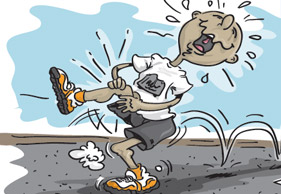
 Andrew N. Bosch, PhD – Modern Athlete Expert
Andrew N. Bosch, PhD – Modern Athlete Expert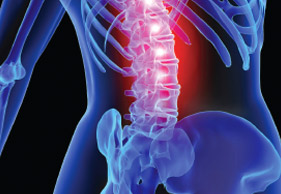
 David van Wyk – Modern Athlete Expert
David van Wyk – Modern Athlete Expert Toni Hesp – Modern Athlete Expert
Toni Hesp – Modern Athlete Expert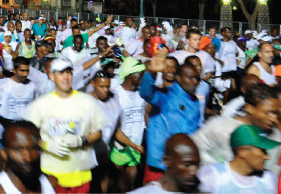
 Barry Holland
Barry Holland Andrew N. Bosch, PhD – Modern Athlete Expert
Andrew N. Bosch, PhD – Modern Athlete Expert